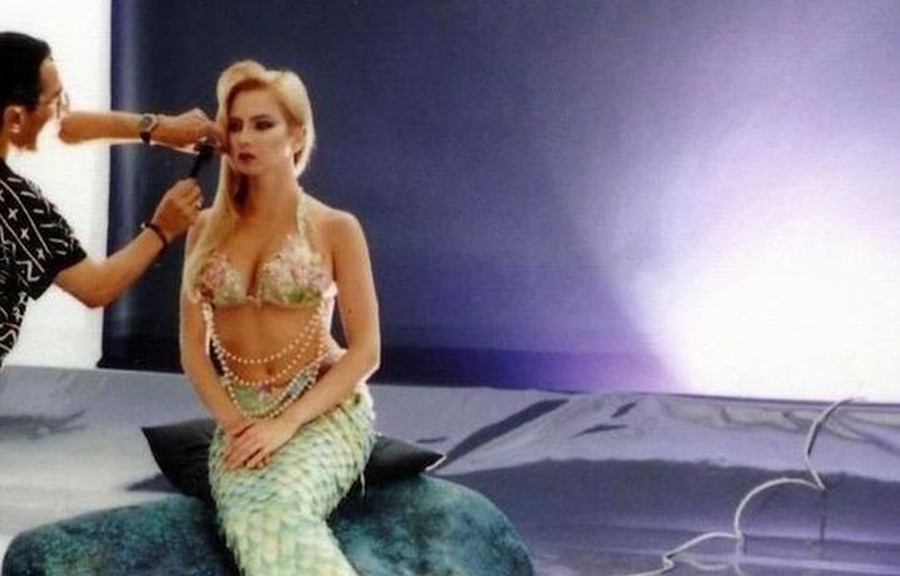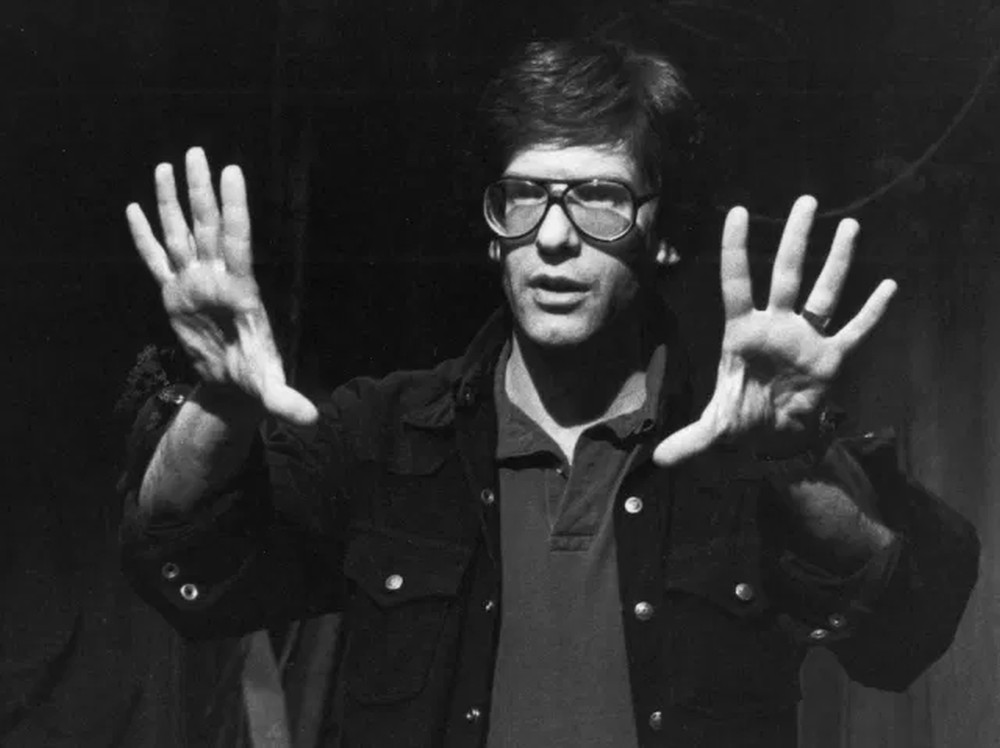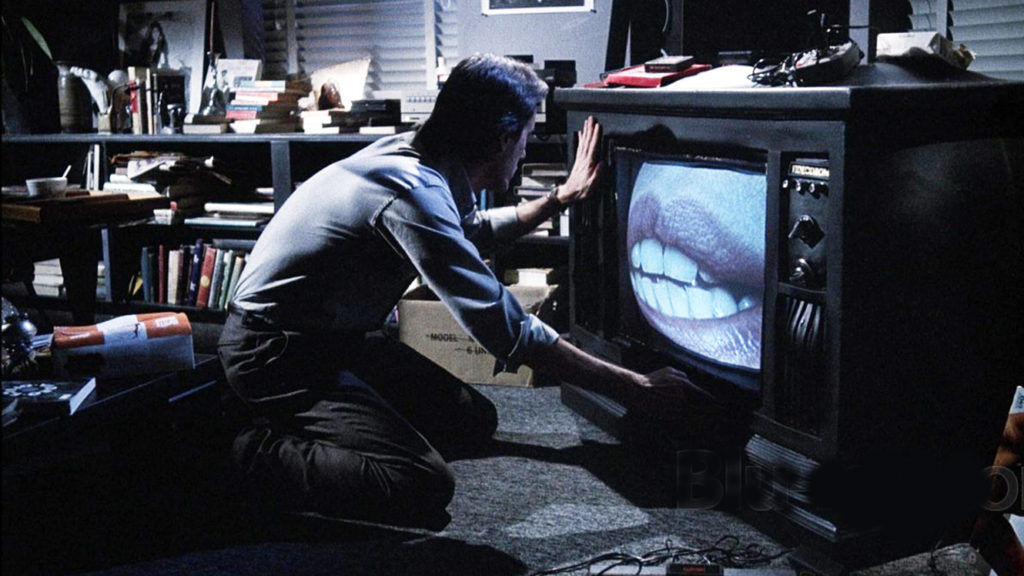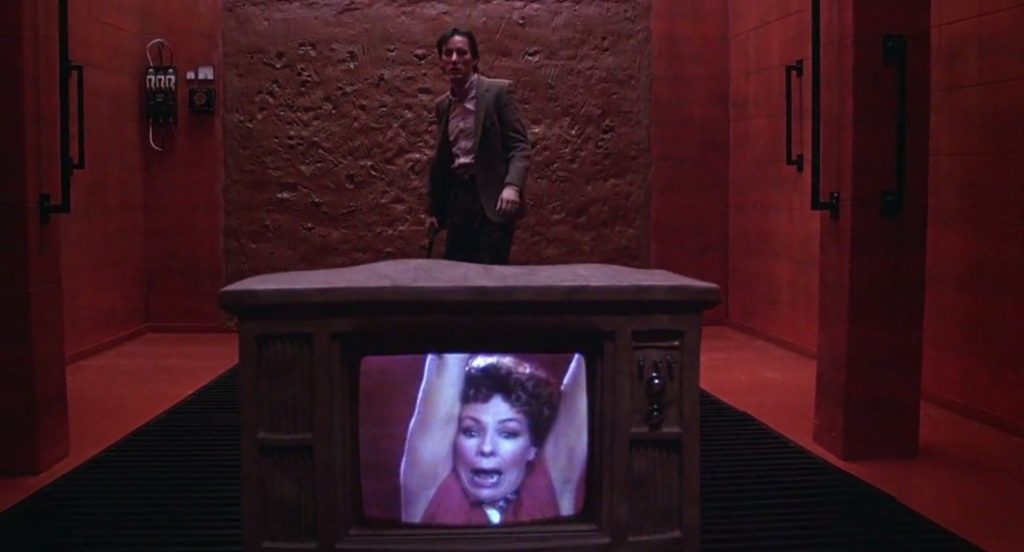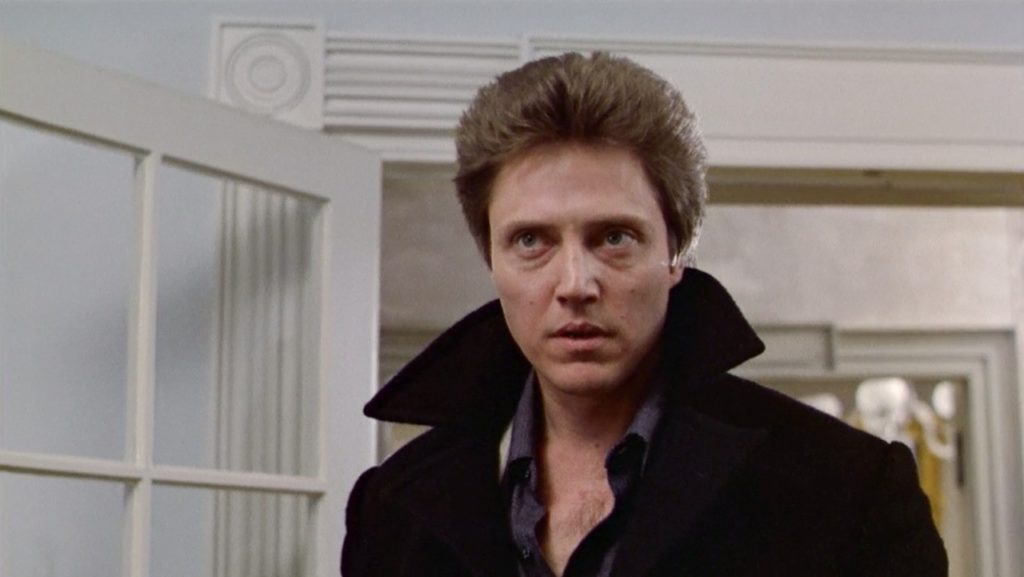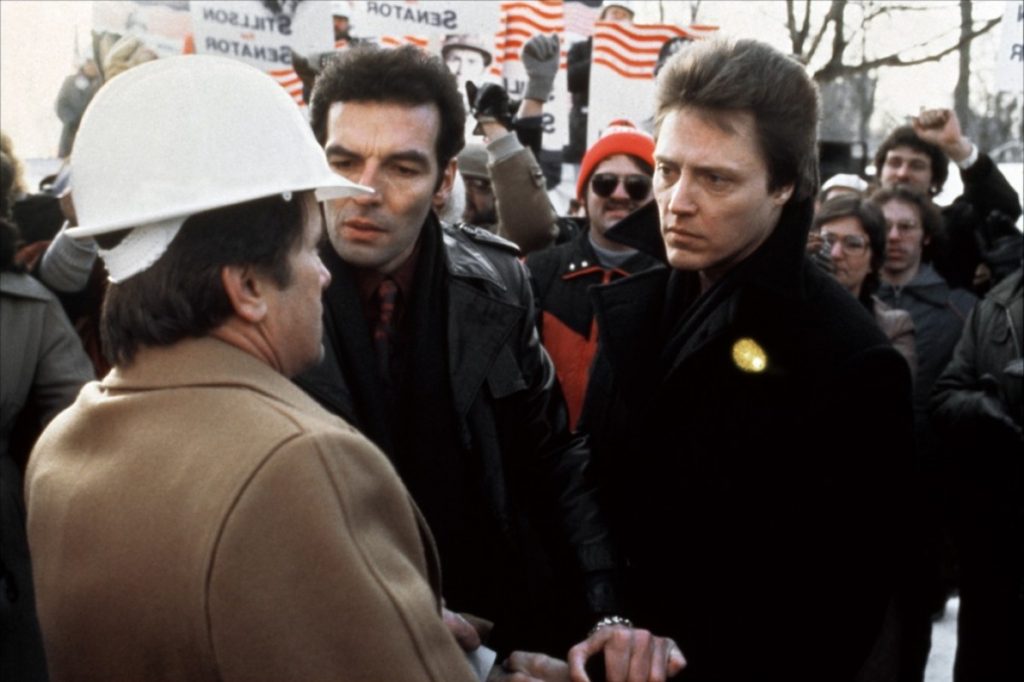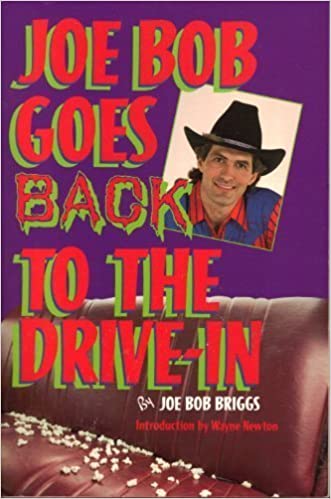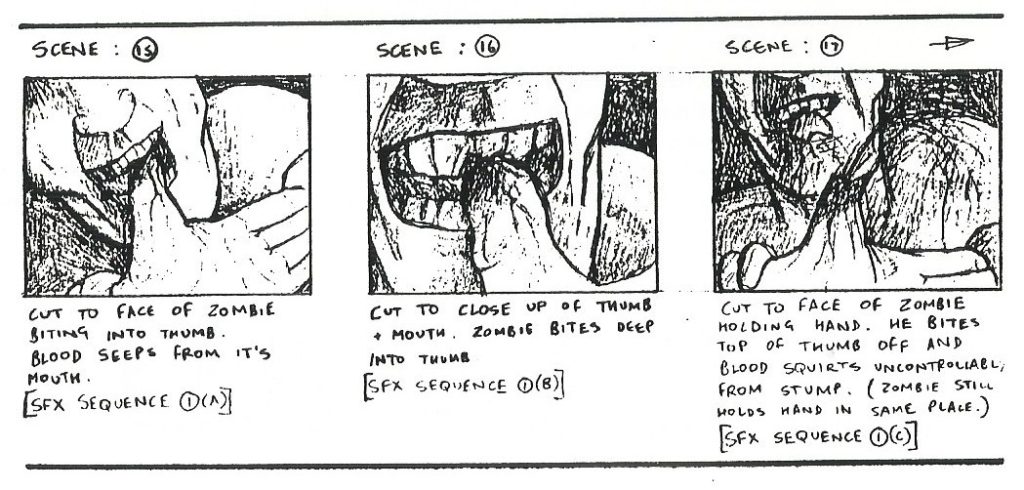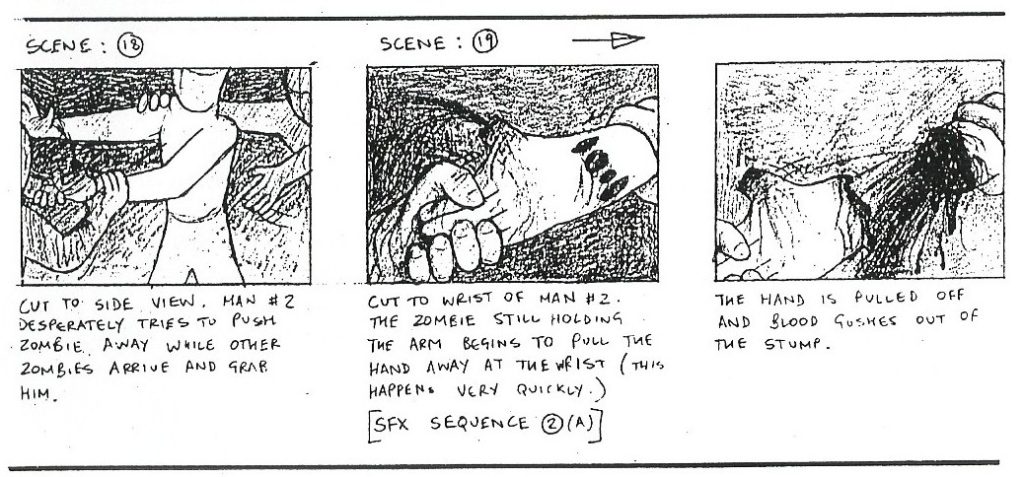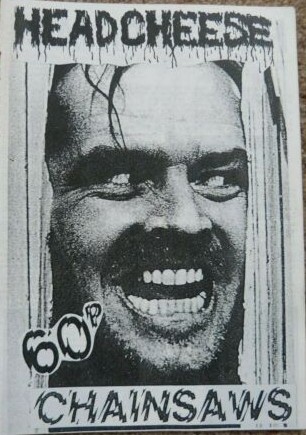Sleaze City
Trials of Traci (Jerry Ross) – Traci Lords. Jamie Gillis, Ginger Lynn.
a.k.a. Talk Dirty To Me, Part 3
“Traci Lords, America’s top adult star looks stunning in a film that has everything including a host of beautiful women” —- Video box blurb.
I didn’t want to buy this video, honest. I was forced into it. Y’see, last year I made the mistake of joining the Britannia Video Club, seduced by their three-films-for-a-tenner offer. I did notice the you-must-buy-three-videos-per-year clause, but thought they’d surely have three films I wanted in twelve months.
Wrong. Coming to the end of my first year, having bought precisely NO films. I decided I might as well get a couple of movies I’d probably be too embarrassed to buy from a shop – ‘Trials of Traci’ and ‘Emmanuelle 5’ (see below) were the most intriguing of the two so I sent off my form and the tapes duly arrived. So, does it live up to the description? No, it doesn’t have “everything”. There no cyborgs. car chases, zombies. aspidistras, microwave ovens or (what else can I see from where I’m sitting?) word processors. This is no great problem. What might be considered a problem is the lack of plot, believable characters, good acting and exciting direction – except. of course, you don’t buy this sort of video for those sort of things. And the BBFC have done their damnedest to reduce the amount of what you did buy it for – the ’18’ rated version sold by Britannia comes in at eleven minutes less than the ’18R’ version, and even that was cut.
The story is definitely reminiscent of ‘Splash’ – a mermaid (Miss Lords) goes up onto the land to try and find a lover. Her landfall is in a naturist reserve where she falls in love with one of the residents. Jack (Gillis) whom she follows around on his sexual exploits. At some point she’s befriended by some female residents (one second she’s wandering around alone. the next she’s happily swimming with them. tail & all – clearly. “befriending mermaids” is something the BBFC comes down heavily on), and there’s a baddie who wants to capture Traci and use her for financial gain. Naturally. this is an ecologically sound porno film, and the mermaid eventually escapes to the sea, taking Jack with her: fortunately. if a little mysteriously, he becomes a merman or it could have been the shortest romantic liaison on record.
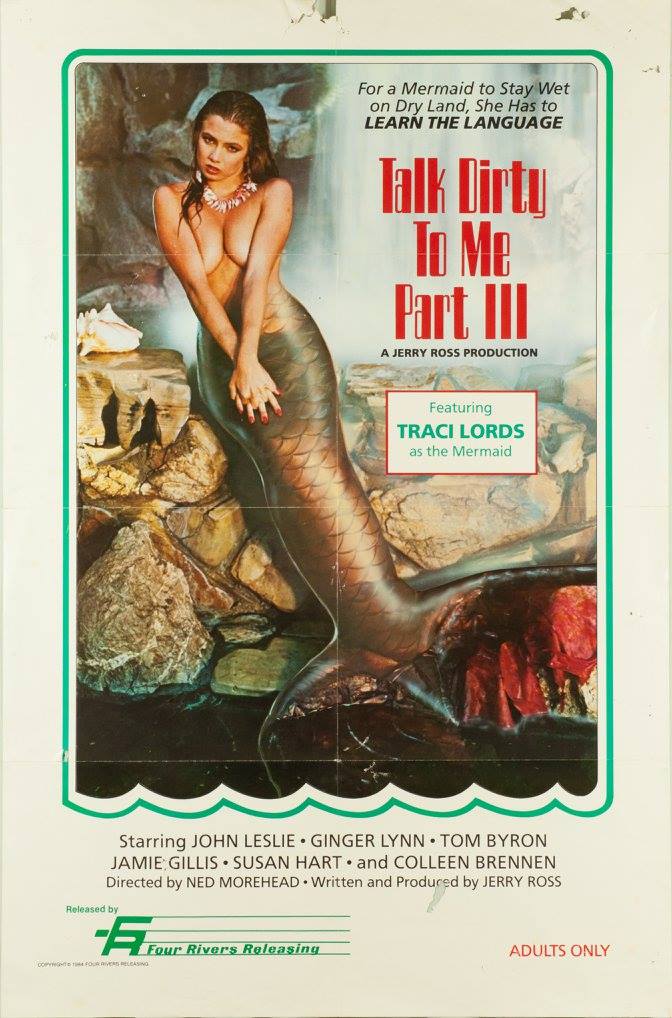
All of the above, naturally. is an excuse for lots of flesh, both male and female. This is a bit of a shame, as the most memorable moments aren’t when some nondescript airhead is taking her clothes off (not Traci. who has more charisma and acting ability than the rest put together) but result from the mermaid’s attempts to learn/speak English. “What’s this? It’s a pussy. Say it – pussy”. says one of Traci’s friends. “Poo-see”. replies Traci. eager to learn. Another slightly amusing scene has Traci listening to a couple making love and using the phrases overheard to simultaneously carry on a conversation.
Directorially, it’s not impressive. There’s one visual idea in the whole 53 minutes, with a shadow of two naked actresses (and I use the term loosely – with their clothes on they could be used as bookshelves, but they fake a mean, and very noisy, orgasm) being cast onto a wall. That this totally contradicts the lighting in the rest of the scene is irrelevant – it’s an idea, and it’s presence should be welcomed without carping about trivia like the laws of physics…
The cuts are never particularly subtle – the most noticeable of them has a man getting up from a chair. then next frame, he’s sandwiched between the two bimbos mentioned above. What’s left is a great deal of breast-nibbling and fondling. a fair amount of ‘poo-see’ and the occasional witty, but only if. shall we say, it resembles last week’s green salad. Odd how vascular pressure can make something obscene. Plenty of female orgasms, no male ones – it’s a tough life for us blokes in the BBFC approved universe.
If it weren’t for the presence of Traci Lords (who deserves to be a major international star) this film wouldn’t have a great deal to recommend it. I may be old-fashioned, but I still prefer my lingerie to be wrapped round a plot, as well as a pack of nubile actresses. This one won’t be replacing ‘Gwendoline’ in the archives. tho’ I may find a use for bits when I do the next unofficial Transvision Vamp promo…
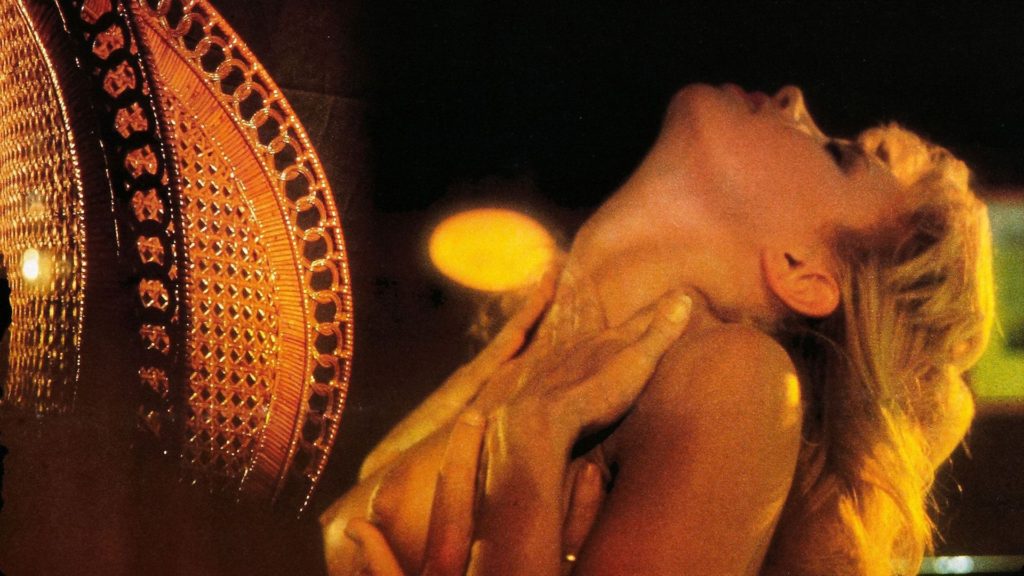
Emmanuelle 5 (Walerian Borowczyk) – Monique Gabrielle.
Discovering who the director of this film is was a little like finding out David Cronenberg had signed up to do ‘Friday the 13th Part IX’. [Of course, a decade after I wrote this, Cronenberg appeared in ‘Jason X’!] Borowczyk has in the past been responsible for some of the most originally depraved films ever made in the genre – ‘Within Convent Walls’ is the most viciously anti-religious film I’ve ever seen. depicting as it does all religious figures as insane, sexually perverse. or bothm and ‘The Beast’ is probably even more warped. It was thus somewhat of a surprise to find him directing this sequel to a sequel to a sequel to a sequel. but the end result still bears the unmistakable hallmarks of a truly deviant mind.
Emmanuelle (Gabrielle – see also ‘The Incredibly Bad Film Show’) is at Cannes promoting her latest torrid movie, ‘Love Express’ when she meets and has an affair with a rich industrialist. Charles Foster (who seems to be the son of a Howard Hughes figure). Then, she is kidnapped by Prince Rashid of Bengalhistan (!)) and added to his harem. Mr Foster isn’t standing for that, and mounts a rescue…
None of which sounds startlingly original. The execution, however. is well weird, giving the impression of having stumbled into someone else’s wet dream. Closeups of object. both inanimate and female, spatter every sequence in Borowczyk’s usual way. Long sequences don’t make a great deal of sense at the time, adding nothing to the plot and often occurring totally out of order. Even the story has weird and wonderful twists – the last five minutes has Emmanuelle convincing Charles to try and fly the plane his father built (the Heron, which is close enough to Howard Hughes’ Spruce Goose). The plane crashes, Emmanuelle escaping by parachute just before it blows up; the explosion is intermingled with shots of Emmanuelle’s naked body.
Borowczyk hasn’t mellowed his religious views in his old age – this time, it’s Hinduism that gets stick for encouraging a sheep-like mentality and treating women like chattels. Other blasts suggest the Cannes festival has become a vipers’ nest of corruption and hangers-on and that the US military is at the beck and call of the wealthy. This isn’t your usual one-sex-scene-every-five-minutes dirty movie.+
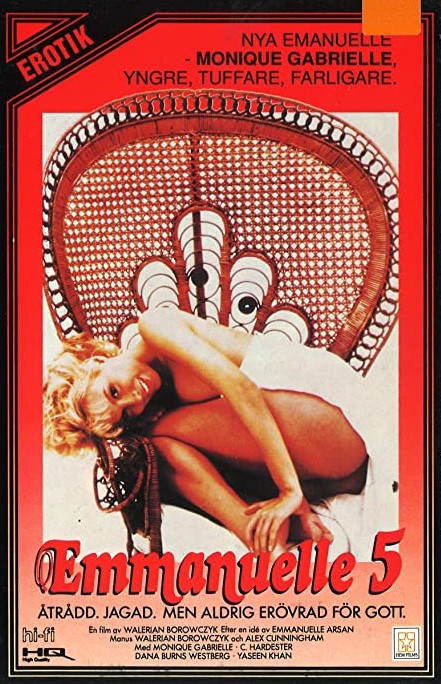
The characters are still fairly flimsy, admittedly, tho’ much of this may be Borowczyk assuming that if we don’t know enough about Emmanuelle from the first four films, we can’t be all that interested. Not a great deal of acting is required from anyone, another common Borowczyk fault, since he seems to believe it’ll distract us from the more visual elements. And since you need all your concentration to work out what’s happening, he may have a point. Still, Monique Gabrielle does what is necessary and she is pretty, in less of the airbrushed Barbie doll way than I expected.
It suffered a little at the hands of the BBFC, losing 2:41 minutes to give a running time of 76 minutes, less than 4% cut (compare ‘Trials of Traci’, approaching five times that), and the staccato nature of the film means that often the soundtrack jumping is the only clue to the cuts. It still occasionally was obvious, most notably a scene in the harem when Emmanuelle helps a prospective (coerced) wife to lose her virginity, with the aid of a rolled up towel. Can’t say I’m overly distressed by having missed that.
How it compares to others in the series I can’t say, since I haven’t seen them, but ‘Emmanuelle 5’ is odd, intriguing, artistic, confusing and erotic by turns, well photographed and high-grade stuff overall. It’s certainly more evidence that the French possess a certain je ne sais quoi when it comes to depicting sex as more than a clinical exercise and imbuing it with classical beauty.
Monique Gabrielle filmography (Alun Fairburn)
- 1984 Hard to Hold
Bachelor Party
Hot Moves - 1985 Deathstalker 2
- 1986 Screen Test
- 1987 Weekend Warriors
Amazon Women on the Moon - 1988 Emmanuelle 5
Not of this Earth
